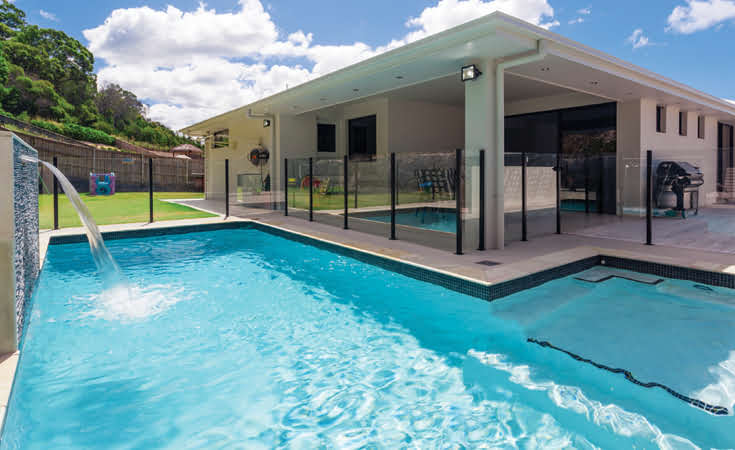
To ensure your pool is in good working order, you really need to be conducting maintenance throughout the year, with different seasons requiring different tasks.
In winter, you shouldn't forget about your pool entirely. Turning it off for four months will lead to a huge cost and effort to get things back up and running come summer.
So, what does winter maintenance look like?
During winter, dirt and debris can find its way into the pool, even if you have a pool cover.
Switch on your creepy-crawly and even get in your pool (try and aim for a warmer day) and give it a good scrub in the areas the creepy-crawly can miss. This includes tiles, grout, skimmers, filters, lights and any other pool edges or cleaning devices that are able to build up with scum over time. This build-up can infect your pool while it's not used over winter, so it is best to get rid of it before it causes any issues.
Also ensure your pool equipment is cleaned and in good working order.
Next, backwash the filter and clean it with a recognised filter cleaner and degreaser. Make sure the skimmer basket and lint pot are free of any debris that has accumulated in your pool before lubricating all O-rings with a silicone based lubricant. If there is not a strong flow of water returning to the pool, we suggest contacting your local pool care specialist for their professional opinion.
Shock your pool at least once throughout the winter. This involves adding a high dosage of pool cleaning chemicals to your pool in one sitting to keep any filth in your pool contained. It is best to run a pump after shocking it to make sure the chemicals are spread evenly.
It is best to switch your pool to winter mode and cover it entirely for the winter season. This may involve investing in a pool cover which will keep dirt, leaves and debris out of your pool whilst also reducing energy costs by approximately 80 per cent. In the summer, this pool blanket also assists in retaining heat in the pool which is usually lost overnight, keeping your pool warm.
Every couple of weeks throughout the winter months it is important to check the chlorine and pH levels to ensure it is between the pH of 7.2 and 7.6. This helps to ensure the water is safe to swim in, whilst also aesthetically pleasing to look at! If you leave pool water untreated it can cause bacteria, viruses, algae and other organisms to grow in the water, turning your pool green. These issues can be costly to treat come summer.
If your pool begins to go cloudy, this is a sign your pool pH is incorrect which can affect the skin and eyes of swimmers. To adjust – add acid if the level of pH is too high or sodium carbonate if the level of pH is too low. Make sure you mix all chemicals in a bucket of water before adding the solution slowly to your pool to ensure you are adding the amount your pool needs. It is always easier to add more solution to your pool rather than attempting to remove it!
Throughout the winter season: